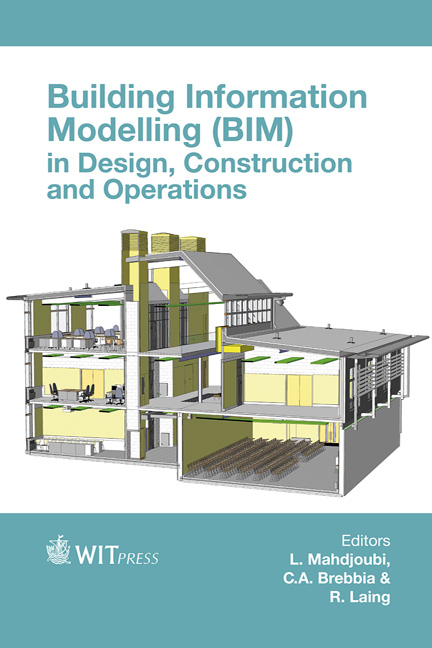The Role Of BIM In Tackling Obsolescence, Climate Change, And Sustainability
Price
Free (open access)
Transaction
Volume
149
Pages
11
Page Range
555 - 565
Published
2015
Size
487 kb
Paper DOI
10.2495/BIM150451
Copyright
WIT Press
Author(s)
T. E. Butt, T. J. Francis, D. Greenwood, K. G. Jones, A. M. Nasir
Abstract
Although the BIM technology is applicable to both new and existing buildings, it is arguably more established in the former than the latter. This is despite the fact that, in the UK alone, 70–80% of what has been built by 2010, is estimated to continue to exist for a number of decades to come: including the years 2020 and 2050 (the two main temporal deadlines in the Climate Change Act, 2008). In addition, this existing building stock is subject to obsolescence (both climate change-induced and non-climate change-associated) which in turn compromises sustainability. Thus, there are three notions that appear to be interwoven, i.e. Obsolescence, Climate Change, and Sustainability: the question is whether BIM can be exploited to address these.
There has been only limited research work to explore the possible influence of BIM upon obsolescence, climate change, and sustainability as individual issues, and none reported, to-date, in terms of an approach to their collective consideration. This paper conceptually explores how BIM can be related with all three crucial notions simultaneously as well as discretely. It is argued that such studies can be particularly valuable in the face of escalating pressures in terms of future obsolescence risks, overwhelming evidence of climate change, and escalating sustainability agendas. The paper reviews current work that relates state-of-the-art BIM to the three notions, both separately and collectively, and thereby delineates the potential for BIM to play a role in addressing the three issues simultaneously.
Keywords
BIM, obsolescence, sustainability, climate change, sustainable development, built environment





